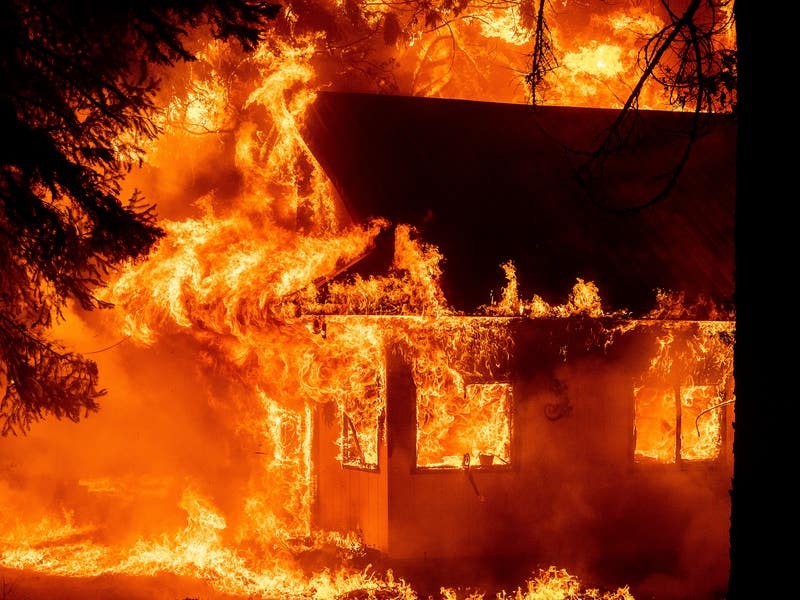California’s largest wildfire has merged with a smaller blaze and destroyed homes in remote areas with limited access for firefighters.
The massive Dixie Fire, which started on July 14, had already levelled over a dozen houses and other structures when it combined with the Fly Fire and tore through the tiny Northern California community of Indian Falls after dark on Saturday.
Fire officials said the blaze had charred nearly 298 square miles acres of timber and brush in Plumas and Butte counties. It was 21% contained.

“It has been burning in extremely steep canyons, some places where it is almost impossible for human beings to set foot on the ground to get in there,” he said. “It’s going to be a long haul.”
However, crews made progress on Saturday by proactively setting fires to rob the main blaze of fuels, Mr Carhart said.
The fire prompted evacuation orders in several small mountain communities and along the west shore of Lake Almanor, a popular resort area.
Firefighters also reported progress against the nation’s largest wildfire, the Bootleg Fire in southern Oregon, containing 46% of the blaze that had consumed nearly 640 square miles.

Crews could get a break from rain and higher humidity predicted for this week, said Marcus Kauffman, spokesman for the Oregon Department of Forestry.
The lightning-caused fire has burned 67 homes, mainly cabins, and at least 2,000 houses were under evacuation orders.
Oregon Governor Kate Brown told CNN’s that it is imperative federal and state authorities invest in mitigation such as tree thinning and preventive burns to limit the number of similar massive blazes.
But she conceded that “the harsh reality is that we’re going to see more of these wildfires”.
“They’re hotter, they’re more fierce, and obviously much more challenging to tackle. And they are a sign of the changing climate impacts,” Ms Brown said.

The proclamation opened the way for more state support.
Such conditions are often from a combination of unusual random, short-term and natural weather patterns heightened by long-term, human-caused climate change.
Global warming has made the West much warmer and drier in the past 30 years.






